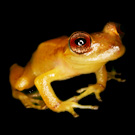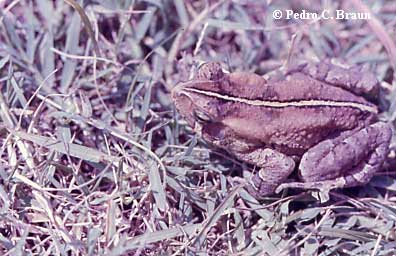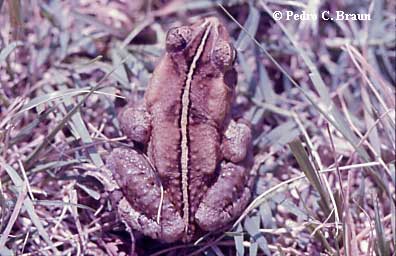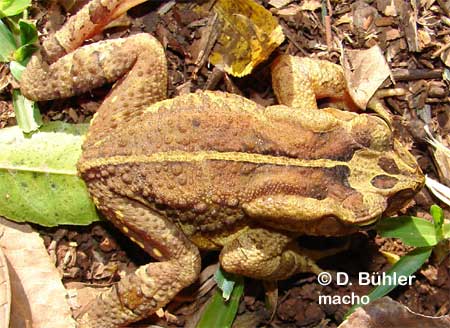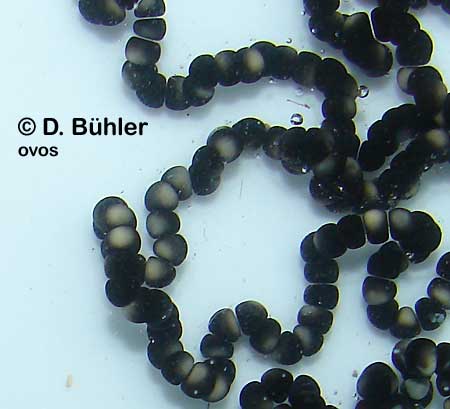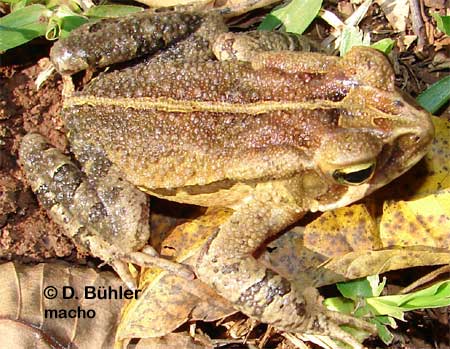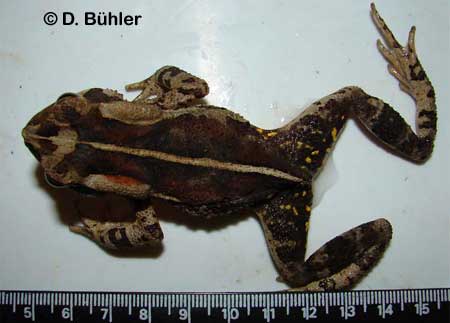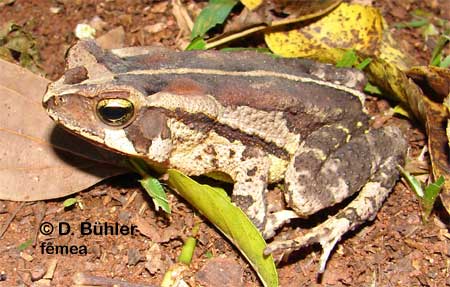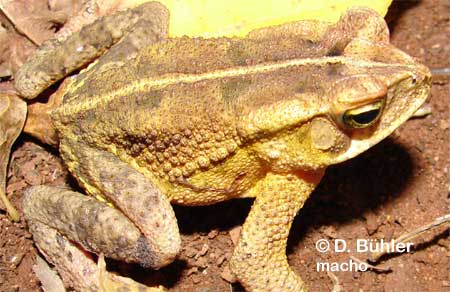

|
 |
 |
 |
 |
 |
 |
 |
 |  |
 |
 |
Merkmale |
Kopf-Rumpflänge 60-80 mm. Mit Knochenleisten am Kopf und dünnen, langestreckten Parotoiddrüsen; Haut warzig. Rückenfärbung variabel, meist braun oder rötlich, mit heller Mittellinie und Muster aus schwarzen Flecken. |
 |
 |  |  |
 |
 |
Verbreitung |
Südbrasilien. IN RS selten, v.a. im nordöstlichen Hochland, z.T. auch Tiefland) |
 |
 |  |  |
 |
 |
Lebensraum |
Wald, zur Fortpflanzungszeit an Bächen. |
 |
 |  |  |
 |
 |
Biologie |
Die Rufaufnahme stammt vom brasilianischen Kollegen Daniel Bühler. Wenig bekannt. Legt Laichschnüre, wie abgebildet. |
 |
 |  |  |
 |
 |
Literatur |
Guix, J. C. and R. M. Lopes (1989). Occurence of Hyla geographica Spix and Bufo crucifer Wied tadpoles in brackish water environments in the JurÉia region (São Paulo, SE Brazil). Amphibia-Reptilia 10: 185-189.
Haddad, C. F. B. and R. P. Bastos (1997). Predation on the toad Bufo crucifer during reproduction (Anura: Bufonidae). Amphibia-Reptilia 18(3): 295-298.
Haddad, C. F. B., A. J. Cardoso, et al. (1990). Hibridação natural entre Bufo ictericus e Bufo crucifer (Amphibia, Anura). Rev. Brasil. Biol. 50(3): 739-744.
Miranda-Ribeiro, A. (1937). Alguns batrachios novos das collecções do Museu Nacional. O Campo, RJ Maio: 66-69.
Oliveira, C., A. C. Sant'Anna, et al. (2003). Morphological considerations on the seminiferous structures and testes of anuran amphibians: Bufo crucifer, Physalaemus cuvieri and Scinax fuscovarius. Biociências, Porto Alegre 11(1): 39-46. |
 |
 |
|
